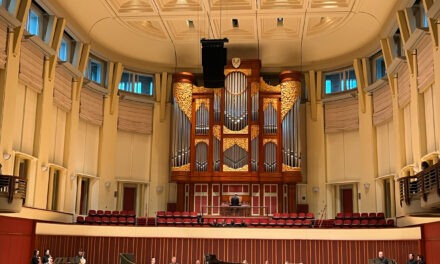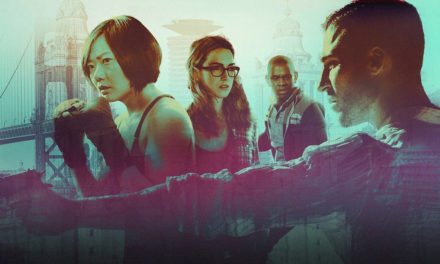The babble of students, families and art patrons surrounded the Woodruff Arts Symphony Hall on the evening of Jan. 19 for the Atlanta Symphony Orchestra performance. Throughout the night, the symphony demonstrated its magical musical ability, both on an individual level and as whole. By the conversations I heard around my seat, it was clear much of the audience shared a passion for music and the arts, which made the night a welcome distraction from the woes of the outside world.
The first piece, “Three Meditations from Mass,” was commissioned for former U.S. President John F. Kennedy, performed by the National Symphony Orchestra and conducted by Leonard Bernstein during the opening of the Kennedy Center for the Performing Arts in 1971. This orchestral piece featured the string sections, with a solo performance by cellist Johannes Mose. Mose clarified the tone of the different parts of the piece both with his playing and with his exaggerated, emotional movements paralleling the sudden changes in tone from movement to movement. The connection between Mose and the orchestra’s conductor, Robert Spano, was like the connection between a painter and his canvas; while Spano primarily took the role as “painter,” Mose took opportunities during his solos to pour his emotion and vision into the performance. He embodied the tone of the piece with his heavy, sudden body motions and harshly plucked strings during brief moments when the rest of the orchestra was silent.
The second and final piece the symphony performed was Dmitri Shostakovich’s “Leningrad Symphony, Symphony No. 7.” The orchestral performers plucked their strings at an intense tempo, and the music grew from a whisper to an overpowering bellow and then retreated to silence. During the third and fourth movements, the symphony took on an ebb and flow like deep water, with the ripples of the bows of the lower strings creating a clear picture of the depth of the music. Principal oboist Elizabeth Koch Tiscione and bassoonist Andrew Brady exuded a particular chemistry during their solo performances in the first movement, constantly aware of the sound the other was producing; in fact, they adjusted their reeds after each phrase to maintain the harmony throughout the duration of the movement. Broad, sweeping moments were paralleled in the body language of the entire symphony and the players’ preparation before playing, making their performance much more uniform than in “Three Meditations from Mass.”
While going to the symphony might not be primarily regarded as a visual experience, the auditory experience was enhanced by the talented performers’ physicality and unity. While the strings of the orchestra had a similar sound to “Three Meditations from Mass,” the addition of the winds was not seamless. Some woodwind soloists would float and mesh with the strings while others seemed to have more emotional inertia, playing with the same emotion as the strings but with a moment’s delay. While at times the delay was not overt, there were moments where it was jarring; soloists later fixed this issue and matched the emotional intensity of the strings supporting them.
The performance was enrapturing. At the conclusion of each movement, the audience could only sit back in stunned silence as the music still reverberated through the hall, followed quickly by applause. The performers’ attentiveness to how they functioned as a part of the whole symphony demonstrated their professionalism and adaptability. Upon the conclusion of the show, thunderous applause congratulated a sea of performers with wide grins. The symphony audience members left the hall in reverence, cloaked in a silence that starkly contrasted the liveliness seen before the show began. Despite the diverse backgrounds seen across the audience, a connection was made among them as patrons of the arts.
Joel Lerner (20Ox, 22C) is from Johns Creek, Georgia, majoring in environmental science. Outside of the Wheel, his interests include theater, music and books. If you want to strike up a (seemingly endless) conversation with him, just mention “Doctor Who” or TikTok. Contact Lerner at joel.robert.lerner@emory.edu.





